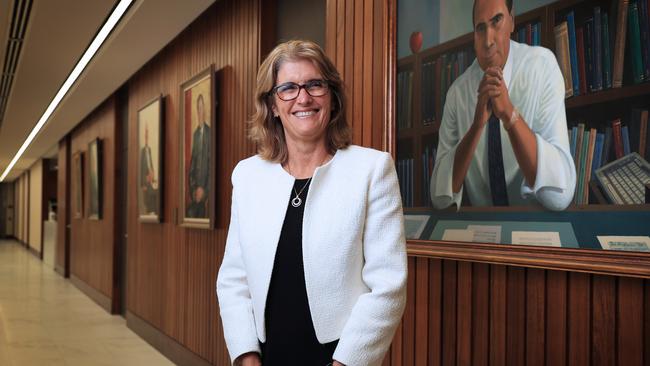RBA’s brutal interest-rate assault is trying to smother inflation before it kills the economy


The Reserve Bank’s big squeeze is deliberately inducing a sharp slowdown in activity to bring inflation back to its mandated range of 2 to 3 per cent and to restore borrowing costs to normal, whatever they may be.
Restricting household cash flow is a feature not a bug of this extraordinary monetary tightening, which will set the economy’s natural exuberance back 12 months or so, and that seems to many like self-harm or overkill at the very least.
If the cost of living is rising, way faster than wages, why crush family budgets even more?
Demand for goods and services has been outrunning the economy’s capacity to produce them, so prices have shot up – building materials, restaurant meals, bread, rents and travel are much more expensive – and the central bank is trying to restore the balance.
Interest rates are the only tool the central bank has at its disposal and those in the frontline of the assault are borrowers.
It’s blunt and brutal, but by squeezing them through that channel, other things happen, such as falls in house prices, and that too cools consumption, which helps to reduce price growth across the economy.
Families get hit by high prices and then mortgage costs progressively eat up a large share of household income, which will this year consume a record one-quarter of disposable funds for those with mortgages.
RBA officials explain that as interest rates rise, people are incentivised to save more rather than consume, and that reduces demand. As well, the Australian dollar stays higher and that means imports are cheaper.
The squeeze began in May last year, a couple of years before the “2024 at the earliest” guidance RBA governor Philip Lowe stuck to for too long for when circumstances would require raising official interest rates from the emergency 0.1 per cent level.
The central bank’s dozen rate hikes will still be working their way through the economy for at least another year. The lagged effects are part of the imprecision of monetary policy.
The RBA is focusing on evidence on spending, wages, inflation expectations and global developments but, like its peers, it is also flying blind.
This is a new era, history is not a useful guide. Covid and the crisis fiscal and monetary support – “too large, too broadbased and too long-lasting” in the words of one international official – have altered financial ecosystems, at the level of the family and globally.
RBA deputy governor Michele Bullock says Australians built up a “massive buffer of savings” during the pandemic because they couldn’t go out or spend it on holidays.
“The million-dollar question is: what do they do with it?” Bullock told a business audience in Newcastle last month. “Do they spend it, or do they decide, ‘Well, no, I’ll sit on that now and I’ll just use it as a bit of a buffer for the future’?”
Inflation peaked before Christmas, but it could take another two years for consumer price growth to return to target and by that time the jobless rate is likely to be at 4.5 per cent, mercifully still below its pre-Covid level.
That’s part of the RBA’s plan: by returning inflation to target over a “reasonable time”, it hopes to preserve most of the remarkable gains in employment.
In theory the central could jack up rates further and faster but that would mean more job losses.
In any case, there’s more misery in store, first for the highly indebted, then an almost endless line of small and large businesses, tradies and graduates who can’t get their foot in the door.
The RBA is adamant that the alternative, where inflation becomes entrenched and distorts the very workings of the economy, is worse, and would cost more in lost jobs and output to fix.
“Price stability is a prerequisite for a strong economy and full employment,” Bullock said in the speech to the Ai Group.
“If high inflation were to become entrenched in people’s expectations, it would be very costly to reduce later, involving even higher interest rates and a larger rise in unemployment.
“A deep and long-lasting recession would be likely, which would mean a substantial rise in the unemployment rate.”
Services inflation is sticky, as firms pass on rising energy costs, wages and rents to customers.
But spending on eating out and travel is about to follow other parts of the interest-rate sensitive economy into difficulty, most notably home building, furnishings and white goods.
Governments will face calls for cost relief, but will have to do so without adding to inflation or payrolls in a way that alters pay expectations for other workers.
Given the starting point of very low unemployment and mighty savings buffers, the slowdown is unlikely to feel like the 1980s when many boomers were buying their first homes or the early 90s when Gen Xers were graduating from school and university.
Nevertheless, the deliberate disruption to Aussie prosperity will feel like recession, especially for millennials and Gen Z, who are doing the heavy lifting of raising kids, getting ahead and paying ever-higher average rates of tax.






Australia’s post-pandemic liberation spending spree is coming to an abrupt end, not by accident but design.